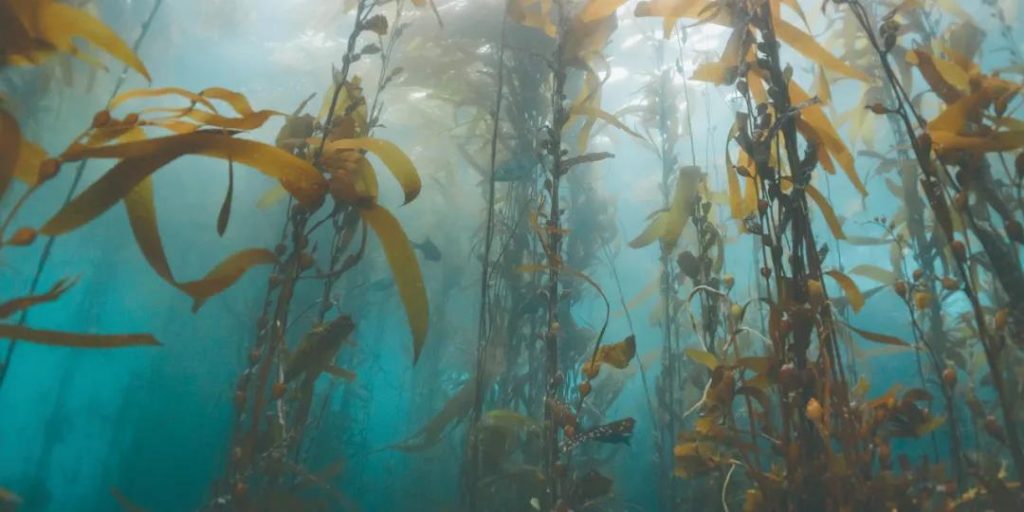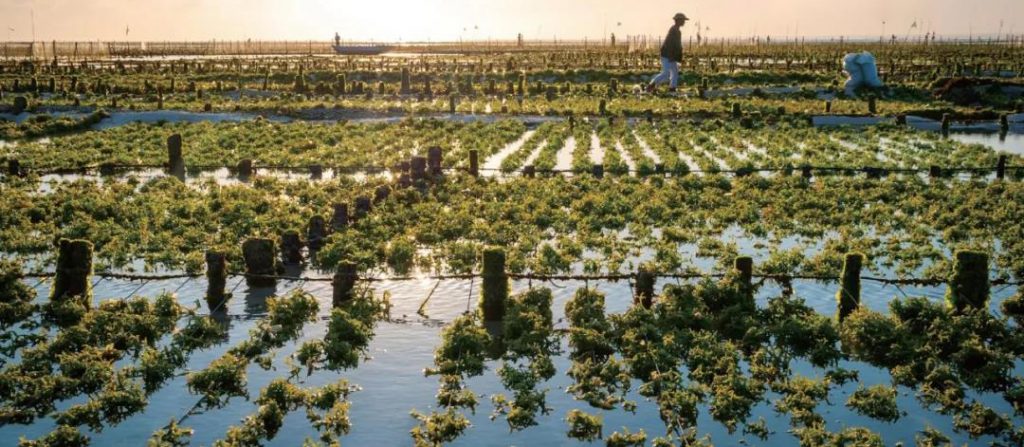
For many people, seaweed is a plant that grows in water, not a food on the table. But in fact, humans have been eating seaweed for tens of thousands of years. More than 13,000 years ago, when humans first entered North America from Asia, they relied on coastal seaweed and the fish they brought to survive as food.
Today, we are still using seaweed. For example, use it to make sushi and other delicious food, or extract some of its ingredients to make recyclable plastics.

In addition, seaweed has greater value that is being developed. For example, cleaning up the ocean, restoring biodiversity, increasing the productivity of aquaculture, absorbing carbon dioxide from the air, curbing the emission of some greenhouse gases, and so on.
Some researchers believe that seaweed is vital to the civilization of saving our planet, but it still has a long way to go.
Well-known value
In biology, seaweed is difficult to define. They are not a single family, but belong to a loose life form called algae. They share a common ancestor with green plants such as moss and trees. There are three main types of them: red algae, brown algae and green algae. The well-known laver, kelp and seaweed belong to these three types respectively. At present, people mainly obtain them through wild fishing and small-scale farming.
There are many benefits to eating seaweed. For example, they are high in iodine, which is needed by the thyroid gland. They are rich in chemicals that are considered beneficial, such as antioxidants. Some seaweeds contain a species called fucoidan. Quality pigment, it may have the effect of inhibiting obesity-experiments on mice have shown that this effect is obvious.
In addition, seaweed is rich in protein and is a good meat substitute. Although some foods (such as soybeans) are rich in protein, they lack essential amino acids. Wakame and seaweed in the seaweed family also contain many of these amino acids.

But different countries differ greatly in eating seaweed. In some East Asian and Southeast Asian countries such as China, Japan, and South Korea, seaweed can often be seen on the dining table. But in many Western European countries, they were not consumed much in history, and people there even regarded it as a kind of “bad food”.
In addition to serving as food, they also appear in other places in our lives. For example, the yogurt we drink, some cosmetics we use, and toothpaste may all contain carrageenan, a component of seaweed. The rise of vegetarians has prompted more and more manufacturers to abandon animal ingredients such as gelatin in favor of carrageenan from seaweed.
In addition, the tendrils of seaweed are not only edible, the long-chain molecules they contain are ideal for making plastic substitutes. At present, a company in the UK has used this ingredient to produce water bottles, and these bottles have been used during the 2019 London Marathon, and they have received good reviews.
Potential not to be underestimated
At present, seaweed fishing is still a small industry, and products related to it are rare in supermarkets. But scientists predict that by 2050, two-thirds of the food needed by the global population will be provided by the ocean. In addition to fish and shellfish, seaweed will play an important role-it is called “the future food from the ocean.”
To obtain a large amount of seaweed, fishing alone is not enough, we must rely on artificial cultivation. Now some countries are actively promoting the creation and expansion of “seaweed farms.”
Seaweed farming has much lower maintenance costs than terrestrial agriculture. All the farmers have to do is to sow seaweed at a depth of several meters, and then tie the seaweed to the buoy. After a few months, drag the buoy out, use a hook to lift the line and peel off the seaweed. The whole process does not need to apply any fertilizer.
However, despite the low cost of seaweed cultivation, it is not easy to expand its cultivation scale. Because it needs to occupy a new area. Under normal circumstances, seaweed farming is carried out in a sheltered area, such as the entrance of a lake or river. Some countries have very limited coastlines, which is a big challenge for them.
Some common practices are to cultivate seaweed in some existing mussels, scallops or oysters and other shellfish farms to maximize the benefits of seaweeds. In addition to saving space, this method has other benefits: the seaweed provides a refuge for the shellfish, and the shellfish removes excess nitrogen from the water. In some Pacific island countries, such as Kiribati, the islanders cultivate seaweed together with milkfish, sandfish, and sea cucumbers to ensure food safety.
Integrated farms like this also have the effect of restoring the ecosystem. For example, many marine organisms usually like to gather near the seaweed buoy line, in this way, seaweed invisibly provide them with a habitat; seaweed has the function of maintaining water quality, it will absorb too much nutrients and minerals in the water, In order to avoid the eutrophication of the water body causing the inability of fish and others to survive; in addition, the seaweed can also restore oxygen and resist ocean acidification.
As the demand for food increases, seaweed and other algae are expected to become an important part of our diet. If the scale expands rapidly, it may even help curb dangerous climate change.
The ability to improve the climate
Currently, animal husbandry is an important source of greenhouse gases. Cows and other ruminants produce methane-there are a large number of microorganisms in their intestines that help them digest, and the metabolism of these microorganisms releases methane gas.
Since 2008, scientific research has continuously confirmed that adding seaweed and seaweed to the food of ruminants can reduce their methane emissions. When the research team fed 12 normal cows with food supplemented with red seaweed, they found that methane emissions dropped by 67% in three weeks. Adding seaweed to their food has the same effect.
In addition to promoting methane emission reduction, seaweed can also effectively absorb carbon dioxide in the air-it photosynthesizes like plants.
A 2017 study found that the current commercial seaweed farms around the world can remove 2.8 million tons of carbon dioxide in a year, and the average seaweed absorbs 1,500 tons of carbon dioxide per square kilometer. Although they are not as efficient as terrestrial forests (the forest can absorb more than 3,600 tons of carbon dioxide per square kilometer), the new seaweed farms can use much more space than forests.
Not long ago, an Australian climatologist had a simple and bold plan-to build a huge ocean farm, grow seaweed in the ocean, and then “bury” all the carbon dioxide and biomass it absorbs into the depths of the ocean.

In 2012, climatologists estimated that the “seaweed forest” covering 9% of the ocean area could reduce the carbon dioxide content in the atmosphere to the pre-industrial level. But this area is almost twice the area of Russia, and more than ten times the total area occupied by wild and cultivated seaweeds today.
If such a large-scale expansion is carried out, how feasible is it?
Scientists admit that there will be many potential problems. For example, if it is carried out on a large scale, will it interfere with the world’s nitrogen cycle; if a large amount of decomposable substances are introduced into the ocean, will it cause hypoxia in the deep sea; whether such a plan is so costly that it can really be done; even someone It is believed that the halogen-containing gas released by seaweed may interfere with the chemical composition of the atmosphere, and so on.
In short, although the ideal is very plump, but the reality is a bit skinny. But we believe that scientists will not give up easily.
Comments